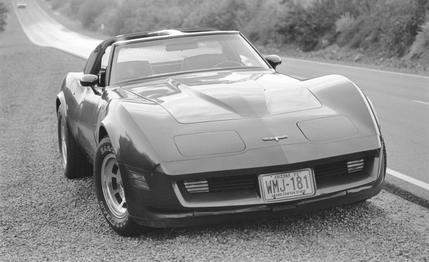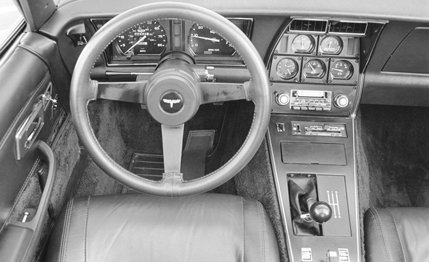
 Road Test
Road Test
As it rolls into its thirteenth model year, the Corvette is unquestionably one of America's longest-running new car hits, right up there with the Checker Marathon as a senior citizen of automobiledom. Thirteen years, that is, if you're just looking skin-deep. If you prefer to put aside the decorator fiberglass on the basis that the chassis, not the body, is really the heart of the Corvette, well, lessee, that was new in 1963 at the launch of the Sting Ray. So the Corvette is really in its eighteenth year.
And selling better than ever, it turns out. General Motors has always been shrewd at marketing, and with the Corvette it has a section of the new-car business all to itself. There's not another two-passenger sports car built in America. Sports-car buyers have to choose a Corvette, a foreign car, or nothing, and enough of them opt for the Corvette every year to keep the one assembly plant running at full speed. Of course this tidy little monopoly — what else could you call the business of making America's only sport car? — takes some of the urgency out of designing new Corvettes. There's not much incentive to tool up a modern sports car, or even maintain the performance that made the old one famous, if every year's batch will be a sellout anyway. So, although General Motors has made radical changes in all its other cars since 1977 — downsized them, made them more efficient and more responsive to the driver; in fact, GM now makes full six-passenger cars that take up less pavement than this two-seater — the Corvette team is still dithering with the same problems that concerned it in 1972. And still taking the easy way out.


Question: Do we design a genuine power-producing dual exhaust or just slide by with a single? Answer: Give them the sucker single; they won't know the difference anyway.
Question: Do we certify a performance engine for California or just stick in the 305 chuffer out of a Biscayne? Answer: Stick it to them.
Question: Do we go to the trouble of certifying four-speed transmissions for the optional engine and for California when automatics are so much easier? Answer: Naw, we sell them all the cars we can make now.


As a result of this attitude, all Corvettes have single exhaust systems terminating in "sporty" twin tailpipes. The only powertrain available in California is a five-liter V-8 with automatic, and the only four-speed available anywhere comes with the 49-state base engine (code L48). The optional L82 (rated at 230 horsepower, up from the L48's 190) is available with automatic only. All of this change in emphasis back at GM naturally results in a new kind of buyer out in the U.S.A. that's supposed to be seen from a Chevrolet. Ten years ago the typical Corvette spent Saturday morning with its hood up, the engine getting a fine tune for the street racing that would inevitably follow. Now the typical Corvette rolls up at the country club on Saturday morning, driven by a guy with white shoes and a while belt.
And yet. And yet, the Corvette still manages to stay interesting, in part because it is such a throwback to the Sixties. Run it up in second gear, let off, and you hear honest-to-God exhaust burble, a semi-big American V-8 kind of chuckling to itself. No new car makes that sound anymore. And the chromed four-speed lever pokes up through the console, offering you those man-sized synchro detents found only in big American transmissions. Foreign cars always snicked up through the gears; American cars demanded muscle — macho — and the Corvette still takes a hefty push. Everything about it feels like big machinery, like American iron of old.